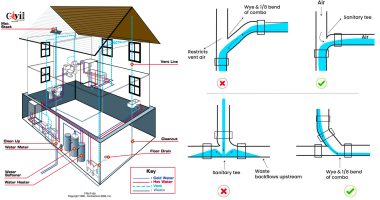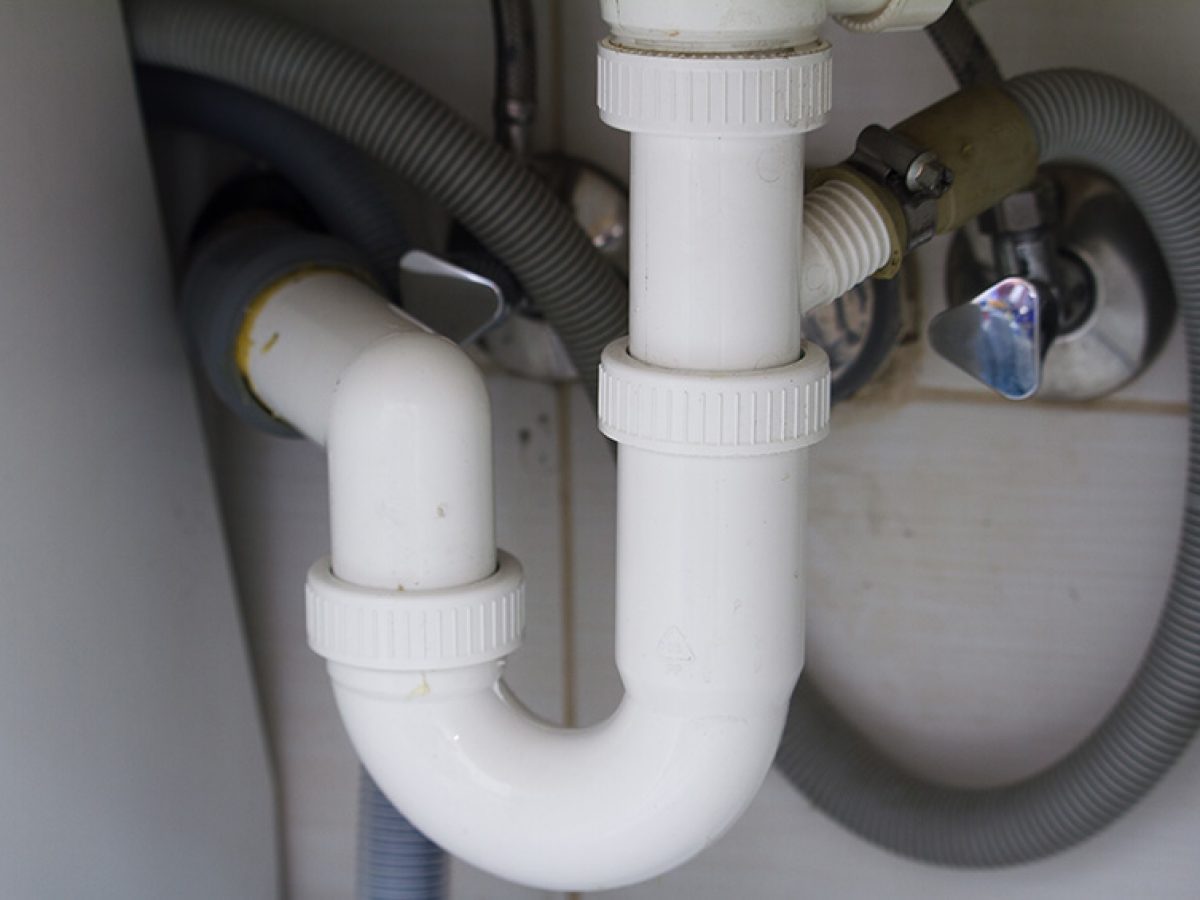The Anatomy of Your House's Plumbing System Explained
The Anatomy of Your House's Plumbing System Explained
Blog Article
The content following next in relation to Anatomy of a House: Understanding the Components is exceptionally stimulating. Check it out for your own benefit and figure out what you think about it.

Recognizing just how your home's pipes system works is crucial for each homeowner. From providing tidy water for drinking, food preparation, and bathing to securely eliminating wastewater, a well-maintained plumbing system is crucial for your household's health and convenience. In this thorough overview, we'll explore the elaborate network that composes your home's plumbing and deal suggestions on maintenance, upgrades, and taking care of typical issues.
Intro
Your home's plumbing system is greater than just a network of pipelines; it's a complex system that guarantees you have access to tidy water and reliable wastewater elimination. Recognizing its elements and how they interact can assist you stop pricey repairs and guarantee everything runs efficiently.
Basic Components of a Pipes System
Pipes and Tubes
At the heart of your plumbing system are the pipes and tubes that bring water throughout your home. These can be made from different materials such as copper, PVC, or PEX, each with its benefits in terms of resilience and cost-effectiveness.
Components: Sinks, Toilets, Showers, etc.
Fixtures like sinks, commodes, showers, and tubs are where water is utilized in your house. Comprehending just how these fixtures connect to the pipes system assists in diagnosing issues and preparing upgrades.
Shutoffs and Shut-off Factors
Valves control the circulation of water in your pipes system. Shut-off valves are essential throughout emergencies or when you need to make repairs, enabling you to isolate parts of the system without interrupting water flow to the entire home.
Water System System
Main Water Line
The main water line attaches your home to the local water or a personal well. It's where water enters your home and is dispersed to different fixtures.
Water Meter and Pressure Regulator
The water meter actions your water use, while a pressure regulatory authority makes sure that water flows at a risk-free pressure throughout your home's pipes system, avoiding damage to pipes and components.
Cold Water vs. Hot Water Lines
Understanding the distinction in between cold water lines, which supply water straight from the main, and hot water lines, which carry heated water from the water heater, aids in troubleshooting and planning for upgrades.
Drainage System
Drain Pipes Pipeline and Traps
Drain pipes lug wastewater away from sinks, showers, and bathrooms to the drain or sewage-disposal tank. Traps protect against sewage system gases from entering your home and also catch particles that might trigger clogs.
Air flow Pipes
Air flow pipes permit air into the drainage system, preventing suction that can reduce drainage and trigger traps to vacant. Appropriate ventilation is necessary for keeping the stability of your plumbing system.
Importance of Appropriate Drainage
Ensuring proper water drainage stops backups and water damages. Frequently cleaning drains and preserving traps can prevent expensive repair work and extend the life of your plumbing system.
Water Furnace
Kinds Of Hot Water Heater
Water heaters can be tankless or traditional tank-style. Tankless heating units warm water on demand, while tanks keep heated water for immediate use.
Updating Your Pipes System
Reasons for Upgrading
Updating to water-efficient components or changing old pipes can enhance water high quality, lower water expenses, and increase the value of your home.
Modern Pipes Technologies and Their Advantages
Explore modern technologies like smart leak detectors, water-saving toilets, and energy-efficient hot water heater that can save cash and lower ecological influence.
Expense Factors To Consider and ROI
Compute the ahead of time prices versus long-term cost savings when considering plumbing upgrades. Many upgrades spend for themselves through minimized energy bills and fewer repair services.
How Water Heaters Attach to the Plumbing System
Understanding exactly how hot water heater link to both the cold water supply and hot water distribution lines assists in diagnosing issues like not enough hot water or leaks.
Maintenance Tips for Water Heaters
Frequently flushing your hot water heater to remove debris, examining the temperature setups, and checking for leakages can extend its lifespan and improve energy efficiency.
Common Pipes Concerns
Leaks and Their Reasons
Leaks can occur due to maturing pipelines, loose fittings, or high water pressure. Attending to leakages without delay prevents water damage and mold development.
Obstructions and Clogs
Obstructions in drains pipes and toilets are commonly brought on by purging non-flushable things or an accumulation of grease and hair. Using drain displays and bearing in mind what drops your drains can avoid blockages.
Indications of Pipes Troubles to Expect
Low tide pressure, sluggish drains pipes, foul odors, or unusually high water costs are indicators of potential plumbing troubles that must be addressed quickly.
Plumbing Maintenance Tips
Normal Evaluations and Checks
Set up annual pipes assessments to capture issues early. Seek indicators of leakages, corrosion, or mineral buildup in faucets and showerheads.
DIY Maintenance Tasks
Simple jobs like cleansing tap aerators, looking for bathroom leakages utilizing color tablets, or shielding subjected pipes in chilly environments can avoid significant plumbing concerns.
When to Call an Expert Plumbing
Know when a pipes concern requires specialist expertise. Trying intricate fixings without proper knowledge can bring about even more damage and higher repair service costs.
Tips for Decreasing Water Usage
Easy routines like dealing with leakages quickly, taking much shorter showers, and running complete loads of washing and recipes can save water and lower your energy expenses.
Eco-Friendly Plumbing Options
Think about sustainable pipes materials like bamboo for floor covering, which is durable and environmentally friendly, or recycled glass for countertops.
Emergency situation Readiness
Steps to Take Throughout a Plumbing Emergency
Know where your shut-off valves are located and how to switch off the water system in case of a ruptured pipe or major leakage.
Importance of Having Emergency Situation Contacts Helpful
Keep call information for regional plumbers or emergency solutions easily available for fast feedback throughout a pipes situation.
Ecological Impact and Preservation
Water-Saving Components and Appliances
Installing low-flow taps, showerheads, and toilets can dramatically reduce water use without sacrificing efficiency.
Do It Yourself Emergency Fixes (When Applicable).
Temporary fixes like using duct tape to patch a dripping pipe or positioning a pail under a trickling faucet can reduce damage up until a professional plumbing technician arrives.
Verdict.
Comprehending the anatomy of your home's pipes system equips you to keep it effectively, conserving time and money on fixings. By complying with regular maintenance routines and remaining informed concerning modern plumbing modern technologies, you can ensure your plumbing system runs efficiently for many years to come.
The Anatomy of Your Home s Plumbing System
Understanding the anatomy of your home s plumbing system is essential for any homeowner. It not only helps in identifying potential issues but also facilitates effective communication with professionals when repairs or upgrades are needed. Your home s plumbing system is more than just pipes and faucets; it s a complex network that ensures the efficient and hygienic flow of water in and out of your house. In this blog, we ll dissect the crucial components of your home s plumbing system. For those in Antelope Valley, Brock Plumbing is your trusted partner for all your plumbing needs, ensuring your system functions smoothly and efficiently.
Water Supply System
Main Water Line: This is where your home s plumbing system begins. The main water line connects your home to the public water supply or a private well. Pipes and Shut-off Valves: Pipes distribute water throughout your home. Shut-off valves are crucial for controlling the flow of water and making repairs without shutting off the entire system. Drainage System
Drain Pipes: These pipes carry waste and water away from sinks, toilets, and showers. Vents: Vents allow sewer gases to escape and help maintain proper pressure in the drainage pipes, ensuring efficient flow of wastewater. Traps: Every fixture has a trap, a U-shaped pipe that holds water and prevents sewer gases from entering your home. The most common is the P-trap under sinks. Fixtures and Appliances
Fixtures and appliances are the most interacted with parts of your plumbing system. They include sinks, toilets, showers, dishwashers, and washing machines. Each fixture and appliance has its own supply and drainage connection, ensuring they receive clean water and can dispose of wastewater effectively.
Water Heating System
Your water heater is a crucial component, providing hot water to various fixtures and appliances in your home. It can be tank-based or tankless, with each type having its own set of advantages and maintenance requirements. Regular maintenance is essential to ensure efficient operation and extend the lifespan of the unit.
Sump Pump
In areas prone to flooding or with high water tables, a sump pump is an essential part of the plumbing system. It s installed in the lowest part of your basement or crawlspace and pumps out water that accumulates, preventing flooding and protecting your home from water damage.
Septic System
Homes that are not connected to a municipal sewer system have a septic system and an underground wastewater treatment structure. Understanding how to maintain your septic system is crucial to prevent backups, odors, and early system failure.
Conclusion
Your home s plumbing system is a complex and essential network, ensuring the efficient and hygienic flow of water in and out of your property. Understanding its key components helps in maintaining it properly and identifying issues before they escalate into major problems. For residents in Antelope Valley, Brock Plumbing is dedicated to providing top-notch services, ensuring that every part of your plumbing system is in perfect working order. Trust our team of professionals to handle all your plumbing needs, ensuring your home remains comfortable, safe, and well-maintained.
https://brockplumbinganddrains.com/blog/the-anatomy-of-your-homes-plumbing-system/

Do you enjoy reading about Exploring Your Homes Plumbing Anatomy? Create a remark down below. We will be delighted to see your suggestions about this post. In hopes that you come back again before long. Kindly set aside a second to share this blog entry if you enjoyed it. Many thanks for your time. Don't forget to come visit our blog back soon.
Call Today Report this page